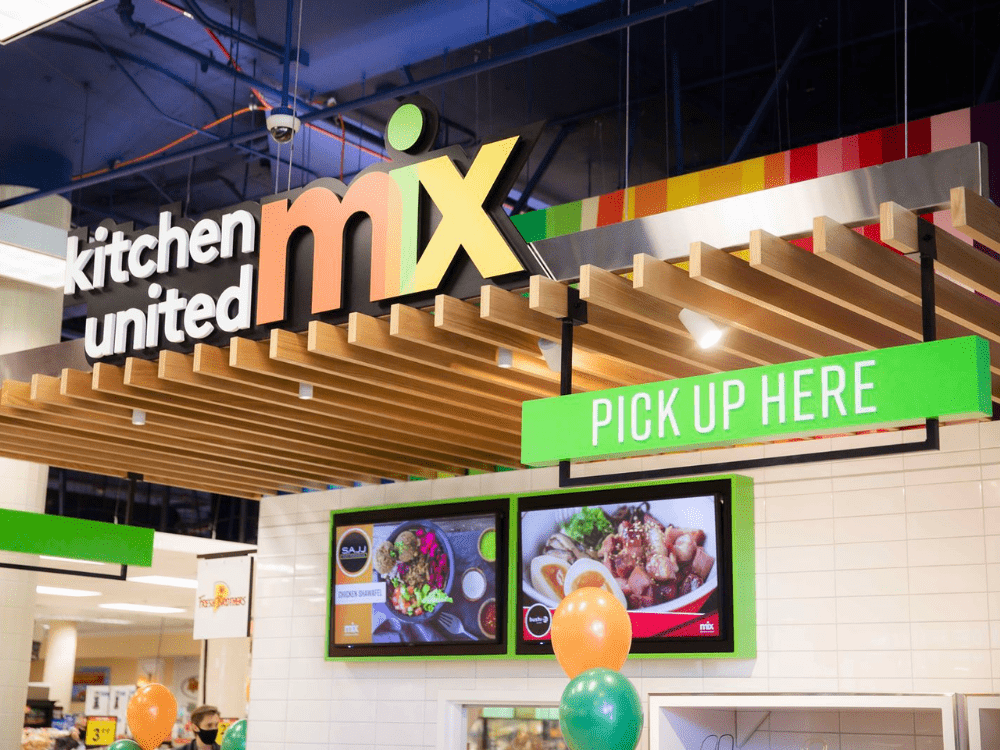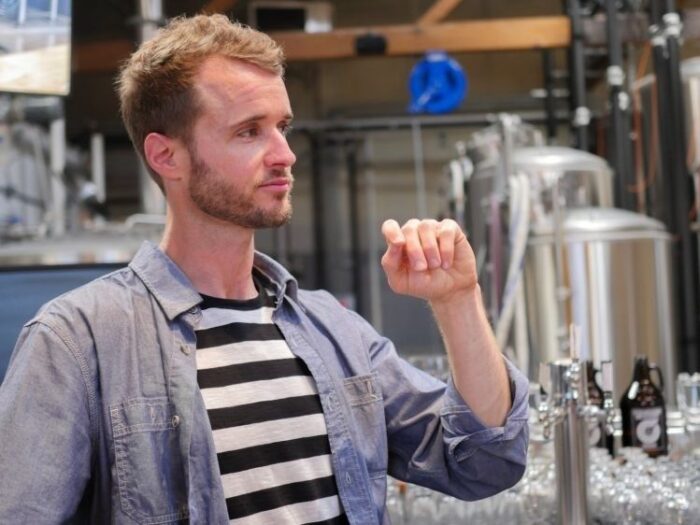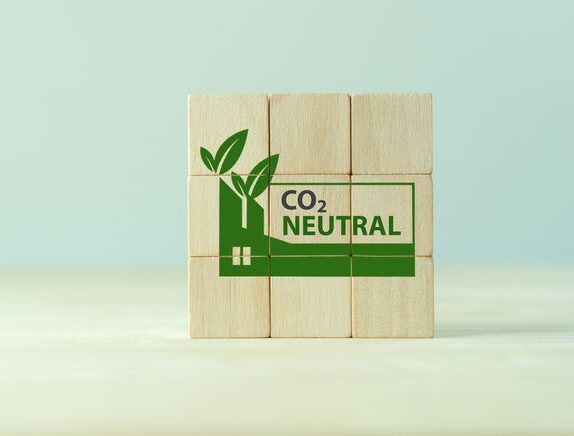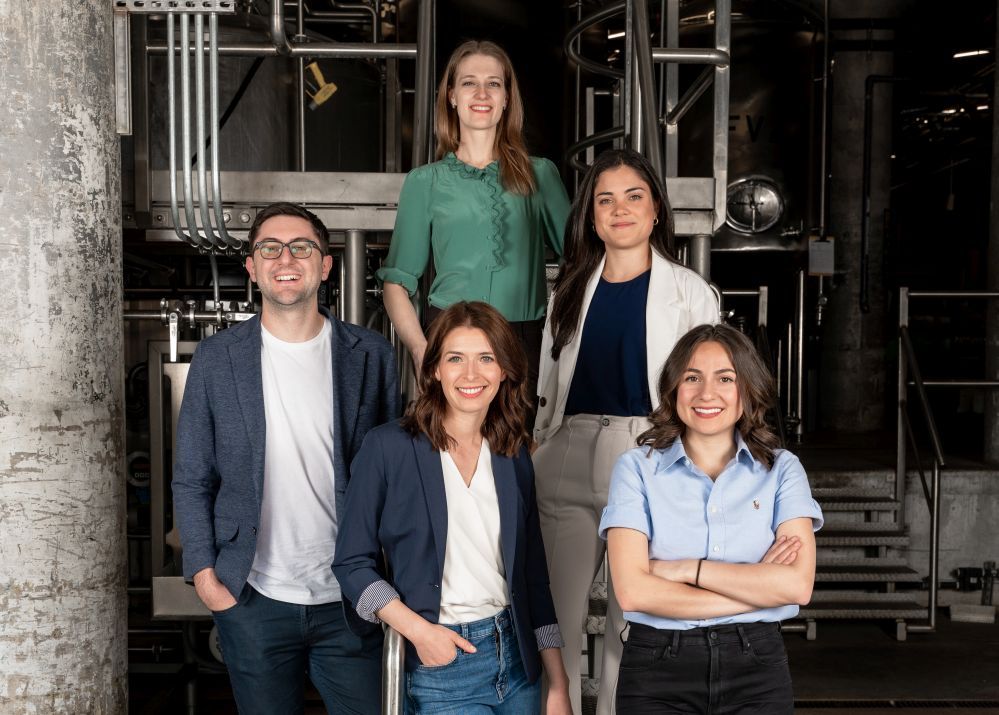2023 has been a tough year for agrifoodtech startups, with high interest rates, inflation, fundraising challenges, banking scares, and souring investor sentiment in sectors from indoor ag to alt proteins, prompting pivots, layoffs, and business failures.
Investors quizzed by AgFunder this month noted the exit of ‘tourist capital’ from the sector, more realistic valuations, and a renewed focus on profitable business models rather than growth at all costs, although some believe we’ve now veered from “a cycle of over-hype” to an over-correction.
Schadenfreude is easy, says Yoni Glickman at PeakBridge’s seed fund FoodSparks, “But too many people celebrated failures rather than learning from them, and in the end, we – the planet, humanity – actually need to be collectively successful.”
Here are some of the highlights (and a few low lights😉) from 2023, plus some key areas to watch in 2024, from designer probiotics to livestock methane reduction.

Annus horribilis for Beyond Meat
‘It has to come up with lots of capital to repay the noteholders by Dec. 2026. We can’t see that happening…’
It’s fair to say that 2023 has been another extremely challenging year for alternative proteins in general and Beyond Meat in particular, which analysts now say is in “survival mode” as sales in its core US retail market continue to decline, despite more promising figures in some international markets.
Sales continue to decline, gross margins are in negative territory, and the company has debts of $1.1 billion thanks to an offering of convertible notes made in 2021 that will mature in early 2027.
According to a 2021 filing from Beyond Meat, the notes need to be paid in cash up to the issuance amount, Brian Ruszczyk at alt protein investor Earth First Food Ventures explained to us in November: “The converts, while they mature in 2027, are redeemable by noteholders at investor discretion in December 2026 and need to be paid in cash up to the issuance amount ($1 billion).
“Beyond Meat needs to come up with lots of capital to repay the noteholders by Dec. 2026,” added Ruszczyk .”We can’t see that happening in this current environment for a company whose business is going backward… They took out this debt when the company had a market cap of $12 billion and it probably made sense back then. Today it does not.”
As for the broader plant-based meat category, dollar sales in US retail fell 11% to $1.1bn in the year to November 26 according to Circana data crunched by 210 Analytics, while volumes fell 17%.
“Category volume has declined year-over-year for 33 consecutive quads through September 9, 2023,” observed John Baumgartner, managing director at Mizuho Securities, in November. “Pressure has occurred despite softer price increases vs. most food categories and, in response, shelf allocation is contracting. Year-to-date plant-based meat total distribution points are down 9% year over year and the average number of items is down 7%.
“We’ve just reduced our 10-year outlook for US plant-based meat category sales to $7.6 billion from $9.4 billion [in 2032] and assume plant-based meat captures a smaller share of the meat market, at 2.5% vs. prior 3% [volume share].”
But it’s not all doom and gloom. Seattle-based Rebellyous Foods, which supplies the foodservice market with plant-based chicken nuggets, tenders, and patties, is experiencing strong demand from 200+ school districts, and anticipating profitable production next year following the installation of its first Mock 2 continuous processing system.
Indoor agriculture
‘People got so enamored with the shiny new toys and technology, they forgot how efficient existing systems that they are trying to replace are…’
The promise of a reliable supply of fresh, local produce with a pesticide-free positioning is alluring. But with multiple indoor crop ag startups running into trouble this year, from AppHarvest, Fifth Season, and AeroFarms, to Iron Ox (now Inevitable Tech), Kalera, Bowery and Infarm, “jaundiced” investors are now laser-focused on models with proven unit economics and financial returns, Revol Greens CEO Michael Wainscott told AgFunderNews on a tour of the firm’s hydroponic greenhouse in Tehachapi, California, in April.
Plants, observed Wainscott, are not widgets that come out perfectly every time. Instead, they are living organisms that require careful handling, and investors that jumped into CEA with the hope of making a fast buck have got their fingers burned.
“People got so enamored with the shiny new toys and technology, that they forgot how efficient existing systems that they are trying to replace are,” noted Wainscott. “This is where the greenhouse market really blew it and why investors are a little bit jaundiced; these startups made it seem like you build a greenhouse and these plants come out like magic. But you can kill plants a million different ways.”
But it’s not all bad news, he said. While some fair-weather investors exited the sector, they left behind a core group of “long-term serious, billion dollar investment groups focusing in on the space, from Cox [which owns Bright Farms], to TPG [key investor in Little Leaf Farms], to Ares [a key investor in Gotham Greens], to Equilibrium Capital [a key investor in Revol Greens].”
Meanwhile, we capped off the year with a big announcement from ReFarm, a consortium in the United Arab Emirates, to build a ‘GigaFarm’ in Dubai with infrastructure provided by vertical farming tech co Intelligent Growth Solutions (an AgFunder portfolio co).

Regenerative agriculture
‘Without adequate support for farmers, there can be no successful regenerative agriculture…’
While there’s no hard and fast definition—not least because different crops require different approaches—’regenerative agriculture’ is a term rapidly gaining traction in the food industry, although a report from investor network FAIRR released in September suggested there’s more talk than action on this front from some large agrifood corporations.
Of 50 publicly listed agrifood companies that have talked publicly about the benefits of regenerative practices such as cover cropping, reduced tillage, and crop rotations, just four (Nestlé, PepsiCo, JBS, and Sodexo) have committed funds to incentivize farmers to take up regenerative practices, said FAIRR.
There can also be high upfront costs, which are hard to justify when benefits don’t come overnight: “Without adequate support for farmers, there can be no successful regenerative agriculture.”
Insurers and lenders, meanwhile, do not currently offer discounts for farmers engaging in such practices because their specific impacts at the field level, especially on crop yields, have not been quantified, said soil health nonprofit Land Core. But all that could change, it told AgFunderNews in August.
Armed with a Foundation for Food & Agriculture Research (FFAR) seeding solutions grant, Land Core is creating a “market-based, actuarially sound model that can determine the risk-mitigation benefits and related cost savings associated with specific soil health practices.”
The model should finally provide the data that insurers and lenders need to incentivize farmers to engage in practices that support soil health, said agricultural economist Dr. Lawson Connor from the University of Arkansas System Division of Agriculture. “We need to quantify the resilience and economic benefits of applying soil health practices to determine the unaccounted value they provide to financial systems and reward the farmers implementing them appropriately.”

Artificial intelligence (AI)
‘It speeds and de-risks the innovation process…’
You’ll be hard pressed to find an agrifoodtech startup that doesn’t mention AI somewhere in its pitchdeck these days, although it will take time to determine exactly where it can be truly transformative.
During the year, we spoke to firms using AI and machine learning (ML) for everything from materials discovery to more efficient extrusion of plant proteins, supply chain risk analysis, optimized cell culture media formulation for cultivated meat, new product development, and ag robotics.
Check out this amazing series of articles from agrifoodtech investor PeakBridge for a more detailed analysis:
- Bytes to Bites part one: Digitizing consumption insights. Leveraging AI in food product development
- Bytes to Bites part two – From farm to fork: Leveraging AI in the food supply chain
- Bytes to Bites part three – Wellness wired: Leveraging AI to digitize nutrition and health

Designer probiotics and next gen gut bioactives
‘Gut barrier integrity is the next big thing in gut health’
Another area with enormous potential for AI is functional foods and supplements, where firms such as Brightseed are using proprietary AI and ML systems to identify hitherto unexplored bioactives in plants. [Disclosure: AgFunderNews’ parent company AgFunder is an investor in Brightseed.]
The tech helped Brightseed develop its first product: upcycled fiber from hemp hulls shown to maintain the integrity of the gut barrier, a semi-permeable layer of cells that allows the uptake of essential nutrients and immune sensing, but keeps out pathogens and unwanted bacteria.
The bioactives—N-trans-caffeoyl tyramine (NCT) and N-trans-feruloyl tyramine (NFT)—“work in a different way from probiotics, prebiotics, and postbiotics, which generally impact the gut microbiome,” says the firm. “We think gut barrier strength is really what’s next in gut health.”
Other players to watch include ‘precision biotics’ startup Verb Biotics, which is developing a new generation of pre-, pro-, and postbiotics to address areas such as stress and mood, metabolic health, satiety, sports recovery, and women’s health.
ZBiotics, meanwhile, is using engineered edible bacteria as a lower-cost alternative to precision fermentation to produce enzymes and other proteins with potential health benefits. “We use a bacterial strain that is shelf-stable at room temperature, that can be orally ingested, and is already evolved to pass through your stomach acid unharmed,” says cofounder Dr. Zachary Abbott. “Then it gets into your gut, wakes up, and starts making the protein, which is a much more powerful mechanism of delivering a functional protein [than precision fermentation].”
Livestock methane reduction
‘We can grow Asparagopsis at a much larger scale, frankly, than anybody else…’
The livestock methane reduction category heated up in 2023, with Australian synthetic biology startup Number 8 Bio raising A$1.8 million ($1.2 million) in a pre-seed round in June to grow methane inhibitors found in red seaweed via precision fermentation using yeast.
Two months later, CH4 Global announced the first close ($29 million) of a $45 million series B round to fund a production facility in southern Australia producing Asparagopsis (seaweed) that can supplement the diets of 30,000 cows. In November, Australian startup Provectus Algae unveiled an indoor growing system for Asparagopsis it claimed could deliver “a step-change in the cost of goods.” [Disclosure: AgFunderNews’ parent company AgFunder is an investor in CH4 Global.]

Plant cell culture
‘It’s a huge space to watch…’
Another area to watch in 2024 is plant cell culture, a technology that’s been around for a while, but has recently started to gain traction in food and nutraceuticals, with Ayana Bio launching its first ingredients (lemon balm and echinacea) in August.
Rather than using sunlight, water, and soil to nurture fully-grown plants, plant cell culture companies grow plant cells in bioreactors in conditions optimized for the rapid production of high-value compounds and secondary metabolites (think aloe vera, vanilla, cocoa polyphenols, saffron, echinacea).
But why grow plants in a bioreactor? First, say fans of plant cell culture, there’s a sustainability argument: Why use all that agricultural land, water and energy to nurture fully-grown plants when you’re only interested in extracting something that might be found in microscopic quantities in the flower, or the leaves?
Second, they say, plant cell culture can ensure a consistent supply of botanicals with supply chains increasingly threatened by climate change and unpredictable weather, political instability, adulteration, disease, and heavy metals and pesticides from soil.
Third, they claim, it offers the promise of rapid, consistent, and controlled production of plant compounds regardless of season or location in a sterile environment, with no pesticides.
Finally, they argue, it can also deliver higher yields. For example, by understanding the metabolic pathways in plants that produce certain polyphenols and the precise conditions that drive plants to generate more of them, skilled players in plant cell culture can achieve concentrations of bioactives that far exceed those produced by plants grown in the wild or via traditional agriculture.

Ghost kitchens
‘They’re dying and nobody noticed…’
Industrial kitchens built to make food for pick-up or delivery, ghost kitchens attracted a surge of investment during the pandemic but have spent 2023 revising their business plans and laying off staff. As the Washington Post observed earlier this year, “ghost kitchens are dying and nobody noticed.”
One of the highest profile players in the space—CloudKitchens (the brainchild of Uber cofounder Travis Kalanick)—raised $850 million at a whopping $15 billion valuation in 2021, but has spent this year laying off staff, closing locations, and decreasing its real estate purchasing, according to a recent report from the Financial Times.
REEF Technology, which raised a cool $700 million from SoftBank in 2020, has recently adapted its business model in a bid to focus on profitability, while Kitchen United recently closed all of its ghost kitchens in Kroger stores as part of a plan to “pivot back into a software business.”
Check out our recent article on restaurant tech HERE.
Ag robotics
Rise of the machines
Things are picking up in the ag robotics space, with US-based Verdant Robotics about to sell its first AI-powered ‘bots for precision spraying of fertilizer, pesticides and pollen, as it moves away from a ‘Robotics as a Service’ model to direct sales. Israeli startup Edete, meanwhile, is picking up traction with its high-tech alternative to the spray and pray approach to artificial pollination.
As for funding, Carbon Robotics bagged $30 million for its laser weeding bots; TechBrew Robotics rebranded as 4AG Robotics and raised $17.5 million to expand its mushroom harvesting technology; Chipotle invested in robotic weeding startup Greenfield Robotics; and Bonsai Robotics landed $13.5m to expand its computer vision tech enabling vehicles to autonomously traverse nut orchards.
As for drones, they account for “a tiny fraction” of crop spraying today, but that fraction “is growing exponentially,” says Mariah Scott, CEO at spray drone services provider Rantizo.
“We’ve seen demand for the service outstrip supply quite significantly, and we’ve had exponential growth in the number of acres sprayed year-on-year for the last three years, because what ag retailers and growers are seeing is that the drone is a timely and versatile tool.”
Guardian Agriculture, which recently landed a $20 million series A round to expand its autonomous drone technology to farms across the US, adds: “Customers, investors, and regulators recognize that there’s no better application of electric, fully-autonomous aircraft than in commercial farming.”

In ovo sexing
No traction (yet) in the US, but 15% market penetration in the EU
Right now, hatcheries incubate billions of eggs, wait 21 days for them to hatch, hire trained ‘sexers’ to determine their sex, and then cull 50% of their chicks (via suffocation or grinding) because the males are of no use to the food industry. They can’t lay eggs, and there’s no market for their meat, as the breeds of chicken used in the egg and meat industries are different.
Ethics aside, this is bad for business and the environment, say organizers of the ‘Egg-Tech Prize, a global competition to find high-tech solutions to end male chick culling.
No in ovo sexing startups have yet met the Egg-Tech Prize’s strict criteria around throughput and accuracy, but recent research suggests that the tech (which enables hatcheries to determine the sex of chicks before they hatch) has a market penetration of almost 15% in the EU, although it has yet to gain any traction in the US.
According to nonprofit Innovate Animal Ag (IAA), “Many new machines have been installed over the last 18 months. Orbem [a German company deploying MRI and AI to detect the sex of chicks at day 12] only commercialized in spring 2023 so their numbers reflect less than a year of production.
“There are also new machines that will come online in the near future including In Ovo’s circuit at Poppel in Belgium, Respeggt’s new circuit at Ankum in Germany, and Orbem’s machine in Dorum, Germany. And Orbem [which raised a $32 million series A in October] and In Ovo [which secured a $42 million loan from the European Investment Bank in November] recently received funding to scale up further.”

Cultivated meat
‘Probably 70-90% of players will fail in the next year…’
2023 has been a pivotal year for cultivated meat, with two players (UPSIDE Foods and GOOD Meat) entering the US market and multiple startups filing applications with regulators in other markets. That said, serious questions remain about the commercial viability of the technology at scale, and investors are predicting a bloodbath as startups start to run out of money.
This process began in March as cultivated pork co New Age Eats made the “painful decision” to shut down after failing to secure funding to complete work on its pilot facility in Alameda, California. Two months later, Lever VC released internal benchmarks for assessing the scientific progress of early-stage cultivated meat companies to help investors place more informed bets and help avoid a “Theranos-style outcome.”
Since then, GOOD Meat—the first player to launch cultivated meat in Singapore in 2020—has been sued by bioreactor partner ABEC for failing to pay its bills, and UPSIDE Foods has been the target of multiple articles querying the viability of its technology.
However, as alternatives proteins entrepreneur and investor Ryan Bethencourt observed in our recent deep dive into the segment, it seems somewhat premature to write off an industry that didn’t even exist a decade ago because it can’t immediately compete with a heavily subsidized industry (industrialized animal agriculture) and associated ecosystem that has been scaling up and driving efficiencies for decades.
Animal-free dairy
From the lab to the real world?
Several more companies have entered the so-called ‘animal-free’ dairy space this year (using engineered microbes or plants instead of cows to produce dairy proteins), while dairy companies including Danone and Australian dairy coop Norco have invested in the tech. The European Innovation Council (EIC) has also funded the “high-risk, high-reward” HYDROCOW project to explore whether it’s possible to make whey protein from gas fermentation, although this is uncharted territory for hydrogen oxidizing bacteria.
As to the market opportunity, while big CPG companies have “launched small things to start (and in the case of General Mills, rapidly dropped them), what we know behind the scenes… is that these are all leading towards much, much larger launches,” insisted Ryan Pandya at Perfect Day when we spoke in August, although no major announcements have since followed.
“On the one hand, you have the animal-free market, but you also have the massive ESG [environmental, social, and governance] benefit of being able to reduce the impact of dairy,” said Pandya. “When we talk to Starbucks, they’re one of the largest dairy buyers in the country, and when they set their ESG goals, they’re looking at dairy because that is the biggest lever to drive their ESG, and that’s true for pretty much any company that’s buying dairy.”

Sustainability claims
Carbon neutral in the spotlight
Manufacturers and retailers are under intense pressure to reduce their environmental impact, with a growing number of firms also seeking to reference such efforts in their marketing, which has landed some brands in hot water this year, with JBS facing pushback over its ‘net zero’ claims and Danone sued over ‘carbon neutral’ claims on Evian bottled water.
Nestlé, meanwhile, is reportedly souring on the term, which has no legal definition.
According to the National Advertising Division (NAD), which evaluates the truth and accuracy of ad campaigns in the US, “NAD has seen an uptick in the use of aspirational environmental benefit claims in recent cases [such as that against meat giant JBS over its ‘net zero by 2040’ claims]. Advertisers should demonstrate that their goals and aspirations are not merely illusory and provide evidence to support their commitments.
“When aspirational claims are tied to measurable outcomes,” added NAD in public comments to the US Federal Trade Commission (FTC) as it considers revisions to its Green Guides, “We have concluded that an advertiser must be able to demonstrate that it has a plan in place that could allow it to achieve the stated goal.”
HowGood, which claims to be building the “world’s largest sustainability database,” meanwhile, argued in its comments to the FTC that the agency “must spell out more clearly what kind of substantiation a company must use to substantiate a ‘carbon neutral’ claim. In particular, it should limit or forbid entirely a company’s use of offsets to achieve such a claim.”

Biomanufacturing
‘The price of reading DNA and writing DNA is falling faster than Moore’s law…’
The synthetic biology field combines biology, engineering, and computer science to design and construct new biological systems or modify existing ones by reprogramming the genetic code of organisms from microbes to plants to animal cells. Applications span everything from bananas engineered to resist the devastating Fusarium wilt fungal disease (Elo Life Systems) to bacteria engineered to stave off a hangover (ZBiotics).
Speaking at a webinar in May, Futurity cofounder Mark Bünger said: “The ability to design genes and software, to automate lab processes… all of that tool building took a little while. But now we’re seeing a whole flood of new companies come in.”
That said, it’s still early days for startups in the field, added SynBioBeta founder Dr. John Cumbers. “The price of reading DNA and writing DNA is falling faster than Moore’s law. But biology is not a mature engineering industry… yet. It doesn’t have well-understood costs and well-understood timelines; that’s what makes it so difficult. Biology isn’t easy to engineer. It’s actually a pain in the ass.”
While much of the coverage of the precision fermentation space has focused on capacity bottlenecks and funding challenges, there has been some positive news on that front, with more capacity set to come online in next few years, including Liberation Labs’ 600,000-L facility in Indiana and ScaleUp Bio’s new facilities in Singapore.
In Europe, Belgium-based Bio Base Europe Pilot Plant has also been expanding capacity to help startups road-test their technology at a larger scale, while Australian continuous fermentation specialist Cauldron is on a mission to build Asia-Pacific’s largest network of “smaller, smarter” precision fermentation facilities as a CDMO (contract development and manufacturing organization).
On the tech front, three startups to watch include Berkeley-based Pow.Bio, which also believes smarter, not bigger, bioreactors will “unlock economic viability;” Cambridge, Mass-based startup Wild Microbes, which is developing a gene-editing approach it claims can create superior production hosts; and San Diego-based Debut, which is building a cell-free biomanufacturing platform.
Other companies to watch on the biomanufacturing front in 2024 include LanzaTech, a specialist in converting carbon emissions from industrial processes into high-value products via a continuous fermentation process, which is now turning its attention to food and feed.

The circular economy
‘Today, just a quarter of the biomass of high-volume crops in North America is used for human consumption or other industrial uses…’
It’s early days, but work is progressing to transform industrial sidestreams into high-value ingredients or feedstocks for biomanufacturing, both areas to watch in 2024 and beyond.
Companies to watch in this space include The Supplant Company, which makes low-glycemic sugar replacements and flours from upcycled agricultural side streams such as wheat straw; Comet, which extracts the prebiotic fiber arabinoxylan from wheat straw; Terra Bioindustries, which makes mild-tasting barley protein concentrate and fermentable sugars from upcycled spent grains; EverGrain, which produces mild-tasting barley protein isolates from upcycled spent grains; Hyfé: which transforms sugary food processing wastewater into feedstocks for biomanufacturing; and Toray, which is working with Mitsui DM Sugar Co to test technology it claims can radically improve the economics of cellulosic sugar production. [Disclosure: AgFunderNews’ parent company AgFunder is an investor in The Supplant Company.]




